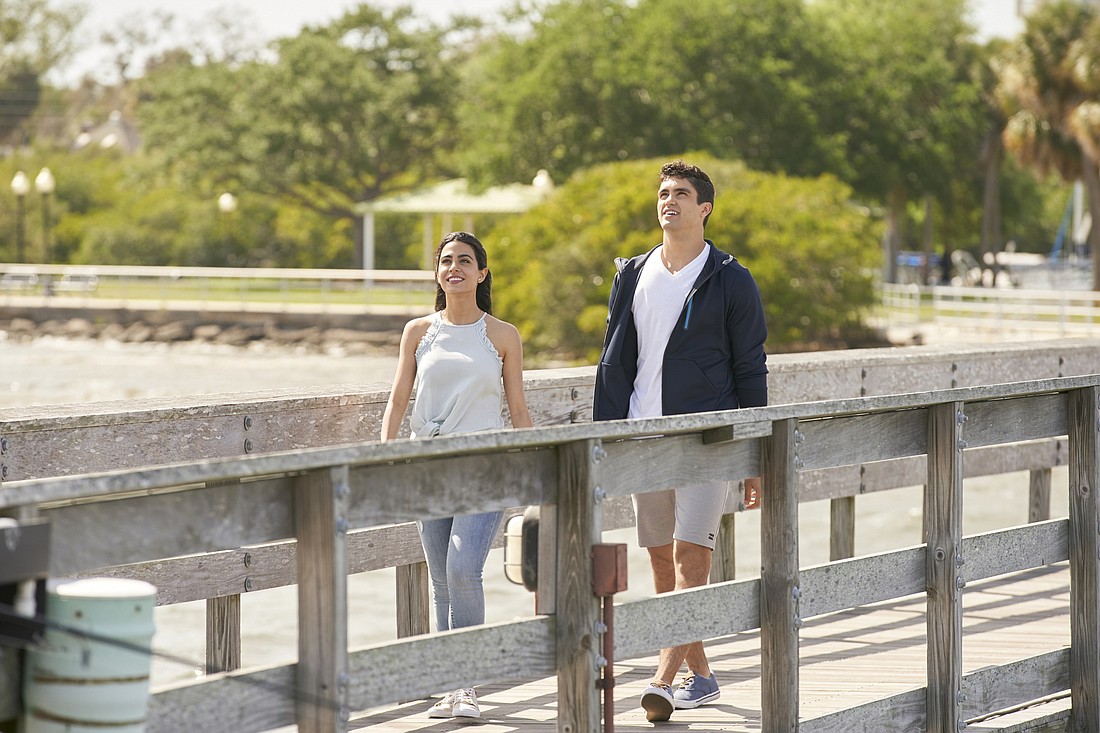- July 26, 2024
-
-
Loading

Loading

In February, the Tampa Bay area saw true love bloom. Then in April, it experienced love in the sun.
These weren’t high-profile engagements or weddings — they were movie shoots for one of the most prolific media entities in the country: the Hallmark Channel.
The shoots, for “True Love Blooms” and “Love in the Sun,” were 15 days each, fast for feature films. They were among the dozens of movies Hallmark makes a year, and for the Tampa Bay
area, the movies had big impact. The films also represent a victory for the region and state in luring movies to town without the ability to offer big-dollar, state-funded incentives like other states can. Now area film officials, using local incentives and other strategies, hope to continue the movie momentum.
Benefits to the area from the productions come in multiple forms, says Tony Armer, film commissioner for the St. Petersburg/Clearwater Film Commission. Economically, the direct spend of each Hallmark film was around $2 million. They’re also a boost to tourism, with viewers visiting the area after seeing it on the screen.
Armer aims to bring additional shoots to the area, Hallmark and otherwise, using a combination of incentive dollars, friendliness and convenience.
Florida-based Elayne Schmidt produced both Hallmark films and says a variety of factors brought the productions to Pinellas and Hillsborough counties, including incentives. “She was a driving force behind getting these projects here,” Armer says.
The state of Florida hasn't offered filming incentives since 2014, when the Legislature declined to fund the program. “The No. 1 challenge — and it’s been well documented — is the lack of state filming incentives,” Armer says. That puts Florida at odds with its neighbors — such as Georgia, Louisiana, South Carolina and Alabama — which do offer incentives. “We don’t worry about that anymore,” Armer says. “We just work with what we’ve got and try to be as proactive and aggressive as we can.”
Armer credits the local incentive program, with funds from FilmSPC’s Business Development Marketing Program, as a big factor in bringing production to the area. The incentive pays up to 10% on qualified expenditures within Pinellas County’s 24 municipalities. “We’re probably one of the most aggressive in the state when it comes to this local incentive program we have,” he says. “We try to make it as simple as possible to get their 10% back from whatever they spend locally.”
Beyond incentives, Armer says the commission pursues productions by traveling to trade shows and other events with industry decision-makers. “The biggest thing is people have to know that you exist and what you have to offer,” he says. He also makes a habit of asking people involved in productions a key question: “What do we need to do to make sure these films come here?” The answers include making it easy to get permits and permissions to do things like block off streets, as well as having a strong crew base and good locations.
“The Tampa Bay area is beautiful,” Schmidt says. “The locations are amazing, and the county’s commissioners are a huge help. It’s nice to be where everyone is motivated.”
Schmidt and her teams got a great reception, she says, and the crew included a lot of local talent. “The location fees and rates are reasonable,” she says. “It’s just a very warm atmosphere.”
Although she spent the majority of her career in Miami in the film industry, Schmidt likes working on the opposite coast. “I prefer the west coast and the Tampa Bay area,” she says. “I think people try harder and work harder, and they’re not as jaded against the film industry. They’re very welcoming, and that means a lot.”
“Making a film is difficult enough as it is. If you have to jump through additional hoops, it’s not very enticing to people.” — Tony Armer, film commissioner, St. Petersburg/Clearwater Film Commission
There’s also a convenience factor to shooting in the area that’s appealing to productions. In Los Angeles or Vancouver, Armer says, if a production wants to use a store as a location, for example, owners tend to charge for it and make the process more challenging. In the Tampa Bay area, the attitude is different, he says, with cities and officials offering their help, so the production runs more smoothly. “Making a film is difficult enough as it is,” Armer says. “If you have to jump through additional hoops, it’s not very enticing to people.”
With each production that comes to the area, including the recent Hallmark movies, there’s a ripple effect, with word spreading about the benefits of shooting there, Armer says. He aims to attract other, similar films to the area, particularly projects with budgets of $2 million or less. “That’s the sweet spot we’ve been focusing on for the last five years,” he says. “We concentrate on those projects we know we could make a difference on.”